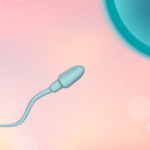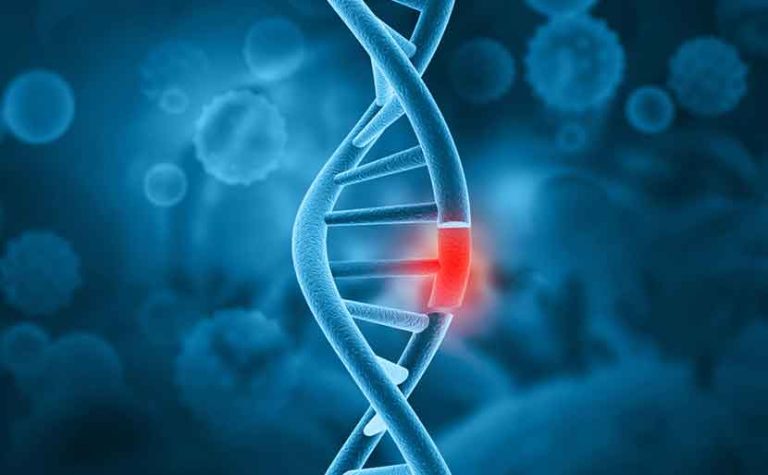Learn about the diagnosis timing of congenital diaphragmatic hernia, its symptoms, and treatment options.
What is Congenital Diaphragmatic Hernia (CDH)?
Congenital diaphragmatic hernia occurs when there’s a hole in the diaphragm, causing abdominal organs (intra-abdominal organs) to move into the chest cavity (thoracic cavity). A hernia refers to organs protruding from the inside of the body to the outside. In the case of a diaphragmatic hernia, it specifically indicates intra-abdominal organs protruding from the abdominal cavity (inside the body) into the thoracic cavity (outside). The reason congenital diaphragmatic hernia is problematic at birth is because it causes significant abnormalities in breathing and blood circulation right after birth. Without proper treatment, it can be life-threatening. The incidence rate of congenital diaphragmatic hernia is about 1 case per 2,000 to 5,000 births. In Japan, it affects around 200 to 300 individuals annually. While most cases occur on the left side, rare instances may occur on the right side. The diaphragm is a thin muscular membrane that separates the chest and abdomen, playing a crucial role during breathing.
The organs that potentially can move from the abdomen to the chest cavity include:
- Small intestine
- Large intestine (colon)
- Liver
- Stomach
- Duodenum
- Spleen
- Pancreas
- Kidneys
When abdominal organs move into the chest cavity, they occupy the space where the lungs should develop. This obstructs lung formation, resulting in a condition called pulmonary hypoplasia, where the lungs cannot grow to their proper size.
When is Congenital Diaphragmatic Hernia Detected?
Congenital diaphragmatic hernia can be diagnosed either during the prenatal period through prenatal screening (prenatal diagnosis) or after birth (postnatal diagnosis).
Diagnosis in the Fetus
Congenital diaphragmatic hernia can be detected through prenatal screening while the baby is still in the womb. The diaphragm typically forms around weeks 8 to 10 of pregnancy, so it’s often discovered during routine ultrasound examinations conducted during prenatal check-ups.
Since prenatal diagnoses often involve severe cases, specialized care is essential immediately after birth.
Diagnosis after Birth
In cases where a small hole was not detected during prenatal check-ups, organs may not always be shifted into the left chest cavity. Therefore, diagnosis may also occur after birth.
Since lung development is often sufficient and newborns typically have relatively stable breathing immediately after birth, they can stabilize quickly enough for surgery. Additionally, postoperative stabilization tends to be rapid.
Causes of Congenital Diaphragmatic Hernia
The cause of congenital diaphragmatic hernia has not been fully elucidated.

Symptoms of Congenital Diaphragmatic Hernia
The symptoms of congenital diaphragmatic hernia vary depending on the severity, ranging from mild to fatal.
The severity is determined by the following factors:
- The extent of the defect in the diaphragm
The larger the defect hole, the more easily organs can move.
- Which organs have moved and how much they have moved
In particular, when the liver moves, it significantly affects the formation of the lungs.
- The degree of abnormality in lung formation
If pulmonary hypoplasia is severe, it may take time for the overall stability necessary for surgery, and survival may not be possible depending on the remaining lung capacity.
When diagnosed with congenital diaphragmatic hernia during the fetal period, most cases are severe. They are typically delivered via planned cesarean section at experienced specialized hospitals, and treatment by neonatologists begins immediately after birth. Sedatives are administered according to the treatment plan to prevent the baby from crying, and intubation is performed to initiate mechanical ventilation.
When congenital diaphragmatic hernia occurs after birth, symptoms such as:
- Rapid breathing
- Retracted breathing※1
- Increased respiratory effort※2
- Groaning※3
are more likely to appear within the first 24 hours of life.
Symptoms are typically observed shortly after birth and are often relatively mild, but infants are usually transferred to the neonatal intensive care unit for assessment and treatment initiation. Occasionally, though rarely, onset can occur beyond infancy. If it occurs later in infancy or childhood, digestive symptoms such as vomiting or abdominal pain may also be present. The variation in onset timing is because even if there is a defect hole in the diaphragm, symptoms may not manifest if organs have not shifted.
※1 Retracted breathing: When breathing in, a part of the chest visibly caves in.
※2 Respiratory distress: Breathing becomes too fast, leading to a feeling of difficulty or discomfort.
※3 Moaning: Symptom of groaning or moaning due to distress or discomfort.
In Severe Cases
After birth, respiratory distress and circulatory failure occur. Specifically, cyanosis, bradycardia, and apnea requiring resuscitation measures are observed. In some cases, resuscitation efforts may not be successful, resulting in death.
The severity of congenital diaphragmatic hernia is often attributed to the following factors:
- Pulmonary hypoplasia due to compression of the lungs by organ displacement
- Persistent pulmonary hypertension of the newborn (PPHN)
Organ displacement from the abdomen can compress the lungs, hindering lung growth, resulting in pulmonary hypoplasia.
In pulmonary hypoplasia, the fetal lungs are not adequately developed. Lungs in this condition have weakened gas exchange function and are less able to expand, making respiratory failure more likely. Pulmonary hypoplasia is also often a cause of persistent pulmonary hypertension of the newborn (PPHN).
Persistent pulmonary hypertension of the newborn is characterized by inadequate oxygen levels in the bloodstream, leading to respiratory distress and circulatory failure. It occurs because the arteries leading to the lungs cannot dilate properly due to narrowing.
Diagnosis of Congenital Diaphragmatic Hernia
Congenital diaphragmatic hernia is diagnosed through the following imaging studies:
- Ultrasound examination
- MRI
First, abnormalities are detected through fetal ultrasound examination, and then the mother undergoes an MRI examination to assess the severity, capturing MRI images of the fetus.
The diagnosis can occur both before and after birth, but currently, 75% of cases of congenital diaphragmatic hernia are detected through prenatal screening.
Prenatal Diagnosis
Prenatal diagnosis is a test conducted before the baby is born. It aims to detect abnormalities in the baby during pregnancy to facilitate early identification and appropriate treatment or intervention.
Imaging diagnosis before the baby is born is done through ultrasound examination, confirming the following items and diagnosing congenital diaphragmatic hernia.
- The position of the heart
- The position of the stomach bubble (gastric bubble)
- Increased volume of amniotic fluid
These three are the effects resulting from the movement of organs from the abdomen into the chest.
Cases where the amount of amniotic fluid increases occur when there is a twist in the pyloric or cardiac part of the stomach due to the movement of organs from the abdomen to the chest. This twist can cause obstruction of the digestive tract, leading to difficulty swallowing the amniotic fluid normally ingested through the mouth, thus resulting in an accumulation of amniotic fluid more than usual.
Gastric bubbles refer to the air in the stomach, and when it refluxes out of the body, it’s called belching. Inside the womb, the stomach is filled with amniotic fluid, so it appears as a low signal (black) on ultrasound imaging. When the stomach moves due to congenital diaphragmatic hernia, the position of the gastric bubble also changes.

Benefits of Prenatal Diagnosis
Before birth, if a baby is diagnosed with congenital diaphragmatic hernia, there are several benefits:
- Preparation for treatment for the baby
- Expanded options for the pregnant woman
- Preparation of the mind to accept the baby’s illness
If a prenatal diagnosis of congenital diaphragmatic hernia is made before 22 weeks of gestation, it may suggest the possibility of the fetus having Trisomy 13 (Patau syndrome) or Trisomy 18 (Edwards syndrome). In such cases, undergoing NIPT (Non-Invasive Prenatal Testing) can be helpful in making decisions.
If abnormalities can be detected early, you can align your birth preparation, postnatal treatment, and even decisions about continuing the pregnancy or considering termination with your life plan. Additionally, you can prepare yourself and your family mentally to accept the baby’s illness from an early stage.
Many parents of babies with disabilities have expressed a desire to know in advance if their baby will have a disability, often for reasons such as wanting to undergo counseling for mental preparation or making financial preparations.
Treatment of Congenital Diaphragmatic Hernia
The treatment for congenital diaphragmatic hernia is surgery. Before surgery, priority is given to stabilizing the respiratory and circulatory conditions. Therefore, what needs to be considered before surgery is the management of the mother after childbirth and the overall management of the baby before and after surgery.
Management of Pregnant Women Before Delivery
Once diagnosed with congenital diaphragmatic hernia through examination, if you’re pregnant, you’ll be referred to a facility with sufficient resources and experience in treating this condition, and a cesarean section will be scheduled. Congenital diaphragmatic hernia is a rare disease, and not all hospitals are equipped to treat it. Sometimes, this might mean being treated in a hospital outside of your prefecture or in a distant location.
For instance, hospitals involved in research on congenital diaphragmatic hernia are often suitable for treatment.
Reference: Neonatal Congenital Diaphragmatic Hernia Research Group
Another way to find hospitals is by getting referrals from the Congenital Diaphragmatic Hernia Patient and Family Association.
Reference: Congenital Diaphragmatic Hernia Patient and Family Association
Overall Management of Babies Before and After Surgery
After birth, if a baby shows signs of respiratory distress, they are immediately placed on a ventilator to stabilize breathing. However, if the baby has pulmonary hypoplasia, a condition where the lungs are underdeveloped, a gentle ventilation approach is employed to avoid putting excessive pressure on the lungs.
In cases of moderate to severe congenital diaphragmatic hernia, the transition of circulation from fetal to neonatal life is not properly established, leading to poor blood flow to the lungs, known as pulmonary hypertension. With successful treatment, pulmonary hypertension typically resolves over time.
To preserve healthy lung tissue until pulmonary hypertension resolves, a gentle ventilation strategy is adopted. This prioritizes minimizing stress on the baby’s lungs, accepting some drawbacks such as elevated CO2 levels and lower oxygen levels in the blood, and adjusting ventilator settings accordingly.
Previously, it was conventional in neonatology to be concerned about the impact on the brain when blood oxygen saturation levels dropped. However, it’s now understood that newborns don’t require as much oxygen immediately after birth, allowing for greater tolerance of lower oxygen saturation levels. This departure from conventional neonatal practice is termed “gentle ventilation.”
Additionally, when newborns suffer from persistent pulmonary hypertension of the newborn (PPHN), they may receive inhaled nitric oxide (NO) therapy. This therapy dilates the pulmonary arteries, increasing blood flow to the lungs and improving oxygenation in the blood, making it an effective treatment for respiratory distress and circulatory impairment. However, the efficacy of inhaled nitric oxide therapy can vary, and if it proves ineffective, extracorporeal membrane oxygenation (ECMO), famously used in COVID-19 treatment, may be considered.
It’s important to note that while inhaled nitric oxide therapy is available in most medical facilities, ECMO requires specialized equipment and expertise, making it not universally accessible.
The management of severe congenital diaphragmatic hernia immediately after birth greatly depends on the available treatment facilities and the experience of medical professionals. Therefore, it’s not an exaggeration to say that the choice of the baby’s treatment facility plays a significant role in determining their outcome.
Surgery for Congenital Diaphragmatic Hernia
The surgical approach involves making an incision in the abdomen to return the displaced organs from the chest back into the abdomen. Subsequently, attempts are made to repair the missing diaphragm. If the defect in the diaphragm is small, it can be directly sutured closed, but if the defect is large, artificial patches may be used.
In cases of mild congenital diaphragmatic hernia, surgeries are also performed using laparoscopy.
On the other hand, in cases where pulmonary hypoplasia is severe, a procedure called fetal tracheal occlusion (FETO) can be performed in select obstetric facilities.
Fetal tracheal occlusion is a method used to promote lung growth in the fetus. By temporarily closing the trachea using a fetal endoscope, leakage of lung fluid is prevented. Retaining lung fluid within the lungs contributes to lung growth, making fetal tracheal occlusion an effective treatment for halting pulmonary hypoplasia.
Assessment of Postoperative Complications
After receiving a confirmed diagnosis of congenital diaphragmatic hernia after birth and surviving through treatment during the neonatal period, if one or more of the following a) to i) apply, it will be judged as severe.
a) Indicates short stature or low body weight exceeding -2 standard deviations (SD).
b) Has mental retardation, motor developmental delay, or other central nervous system disorders.
c) Requires treatment for hearing impairment.
d) Requires artificial respiration management, oxygen therapy, or tracheostomy management.
e) Requires parenteral nutrition or enteral nutrition (including gastric fistula).
f) Requires surgical or medical treatment for gastroesophageal reflux disease.
g) Requires treatment with pulmonary hypertension medications.
h) Requires hospitalization for treatment of recurrent respiratory infections at least twice a year.
i) Has chest deformities such as funnel chest or scoliosis requiring observation or treatment.
Reference: Overview and diagnostic criteria for congenital diaphragmatic hernia, etc./Ministry of Health, Labour and Welfare
The criteria for determining mild cases is if none of the above symptoms apply, and the individual has survived for more than 90 days after a confirmed diagnosis of congenital diaphragmatic hernia.
Survival Rate and Prognosis of Congenital Diaphragmatic Hernia
The survival rate of congenital diaphragmatic hernia is high. When treated early with surgery and without complications, the survival rate is said to be around 85%.
The prognosis for congenital diaphragmatic hernia is generally good, but about 15% with severe cases may require home medical care.
After surgery for congenital diaphragmatic hernia, the following symptoms are likely to occur.
- Pneumothorax
- Chylothorax※4
- Pleural effusion
- Intestinal obstruction
Known sequelae and complications associated with congenital diaphragmatic hernia include:
- Respiratory infections
- Bronchial asthma
- Chronic pulmonary dysfunction
- Chronic pulmonary hypertension
- Gastroesophageal reflux disease
- Reflux esophagitis
- Nutritional disorders
As a result of the aforementioned nutritional disorders, the following symptoms are also more likely to occur:
- Growth retardation
- Delayed psychomotor development
- Hearing impairment
- Funnel chest (pectus excavatum)
- Scoliosis
※4 Chylothorax: Chyle is a mixture of fat and fatty acids in lymphatic fluid and exists within the lymphatic vessels. When chyle leaks from the lymphatic vessels into the chest, it is called chylothorax. This can cause shortness of breath, coughing, and difficulty breathing.
Conclusion
Congenital diaphragmatic hernia (CDH) occurs due to developmental abnormalities during the formation of the fetal diaphragm. The survival rate of babies with CDH is high, and many babies can lead normal lives with treatment. However, some babies may experience lingering complications.
It’s crucial to give birth to a baby with CDH in a hospital with established expertise and facilities for treatment. If abnormalities are detected during prenatal check-ups, the expecting mother will be referred to a hospital equipped with a Neonatal Intensive Care Unit (NICU) and pediatric surgery services.
Moreover, there are various supports available for babies with CDH and their families to address potential long-term effects. Gathering such information and completing necessary procedures can be time-consuming, but coordination with the hospital where the surgery is performed and subsequent pediatric care can provide support.
CDH is a condition that can be diagnosed prenatally. Regular prenatal check-ups are essential to ensure abnormalities are not overlooked.
【References】
- Rare Diseases Information Center – Congenital Diaphragmatic Hernia (Designated Rare Disease 294)
- Pediatric Chronic Disease Information Center – Congenital Diaphragmatic Hernia
- Japanese Society of Pediatric Surgeons – Congenital Diaphragmatic Hernia
- Neonatal Congenital Diaphragmatic Hernia Research Group – Research on Epidemiological Survey and Development of Clinical Guidelines for Pediatric Respiratory Abnormalities and Developmental Disorders
- Rare Diseases Information Center – Respiratory Diseases Category | Neonatal Diaphragmatic Hernia (Fiscal Year 2011)
- National Center for Child Health and Development – Improved Survival Rate of Fetuses with Congenital Diaphragmatic Hernia Treated with Fetal Therapy: Effectiveness of Fetoscopic Tracheal Occlusion Demonstrated in International Randomized Comparative Trial
- Shiga University of Medical Science – Inhaled Nitric Oxide (NO) Therapy for Neonates
- MSD Manual Home Edition – Neonatal Persistent Pulmonary Hypertension
- Osaka University Pediatric Surgery – Is Gentle Ventilation (avoidance of setting the ventilator too high) effective in improving the prognosis of neonatal CDH?
- Congenital Diaphragmatic Hernia Patient and Family Association
Learn about the diagnosis timing of congenital diaphragmatic hernia, its symptoms, and treatment options.
Article Editorial Supervisor

伊東 真隆先生
ヒロクリニック新宿駅前院
ヒロクリニック横浜駅前院
 中文
中文























